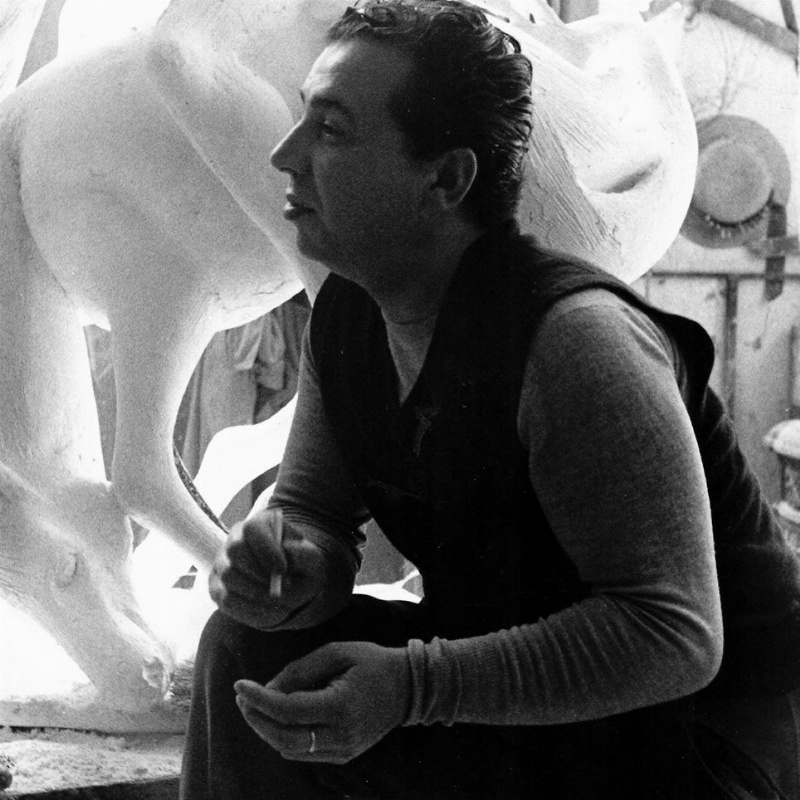
Evaluation Pericle Fazzini
Pericle Fazzini Valuations - Want to sell a Pericle Fazzini piece? Request a complimentary and confidential valuation!Colasanti Casa d'Aste will review your submission and offer a free-of-charge estimate, if your item is suitable for our auctions.
biography
Pericle Fazzini (Grottammare, May 4, 1913 – Rome, December 4, 1987) was one of the most important Italian sculptors and painters of the 20th century, also known as 'the sculptor of the wind'. His artistic training began in his father Vittorio's workshop, a skilled woodcarver and cabinetmaker in Grottammare, where Pericle learned the first techniques of woodwork and developed an early sensitivity for sculpture. With the help of poet Mario Rivosecchi, in 1929 he moved to Rome to attend drawing courses at the Academy of Fine Arts, immersing himself in the vibrant artistic scene of the capital.
In Rome, Fazzini attended the Scuola Libera del Nudo and participated in major exhibitions such as the II Quadriennale di Roma in 1935, where he received an award for the reliefs 'Danza' and 'Tempesta'. In 1938 he opened his studio in via Margutta, which became the center of his creative activity for the rest of his life. He exhibited successfully in Paris, Rome, and at the Venice Biennale, gaining recognition with works such as 'Portrait of Ungaretti' and 'Young Man Listening'. Fazzini was one of the leading figures of the Scuola Romana and participated in the 'Corrente' art movement, collaborating with influential magazines and artists.
Throughout his career, Fazzini worked with various materials, from wood to bronze, and distinguished himself for a style that combined plasticity, movement, and attention to the 'unfinished', emphasizing the expressive qualities of his works. He taught at the Museo Artistico Industriale in Rome from 1937 to 1952, then at the Academy of Fine Arts in Florence and the Brera Academy in Milan. In 1968 he won the Feltrinelli Prize for Sculpture, a prestigious award that confirmed his role as a leading figure in 20th-century Italian sculpture.
In Rome, Fazzini attended the Scuola Libera del Nudo and participated in major exhibitions such as the II Quadriennale di Roma in 1935, where he received an award for the reliefs 'Danza' and 'Tempesta'. In 1938 he opened his studio in via Margutta, which became the center of his creative activity for the rest of his life. He exhibited successfully in Paris, Rome, and at the Venice Biennale, gaining recognition with works such as 'Portrait of Ungaretti' and 'Young Man Listening'. Fazzini was one of the leading figures of the Scuola Romana and participated in the 'Corrente' art movement, collaborating with influential magazines and artists.
Throughout his career, Fazzini worked with various materials, from wood to bronze, and distinguished himself for a style that combined plasticity, movement, and attention to the 'unfinished', emphasizing the expressive qualities of his works. He taught at the Museo Artistico Industriale in Rome from 1937 to 1952, then at the Academy of Fine Arts in Florence and the Brera Academy in Milan. In 1968 he won the Feltrinelli Prize for Sculpture, a prestigious award that confirmed his role as a leading figure in 20th-century Italian sculpture.





